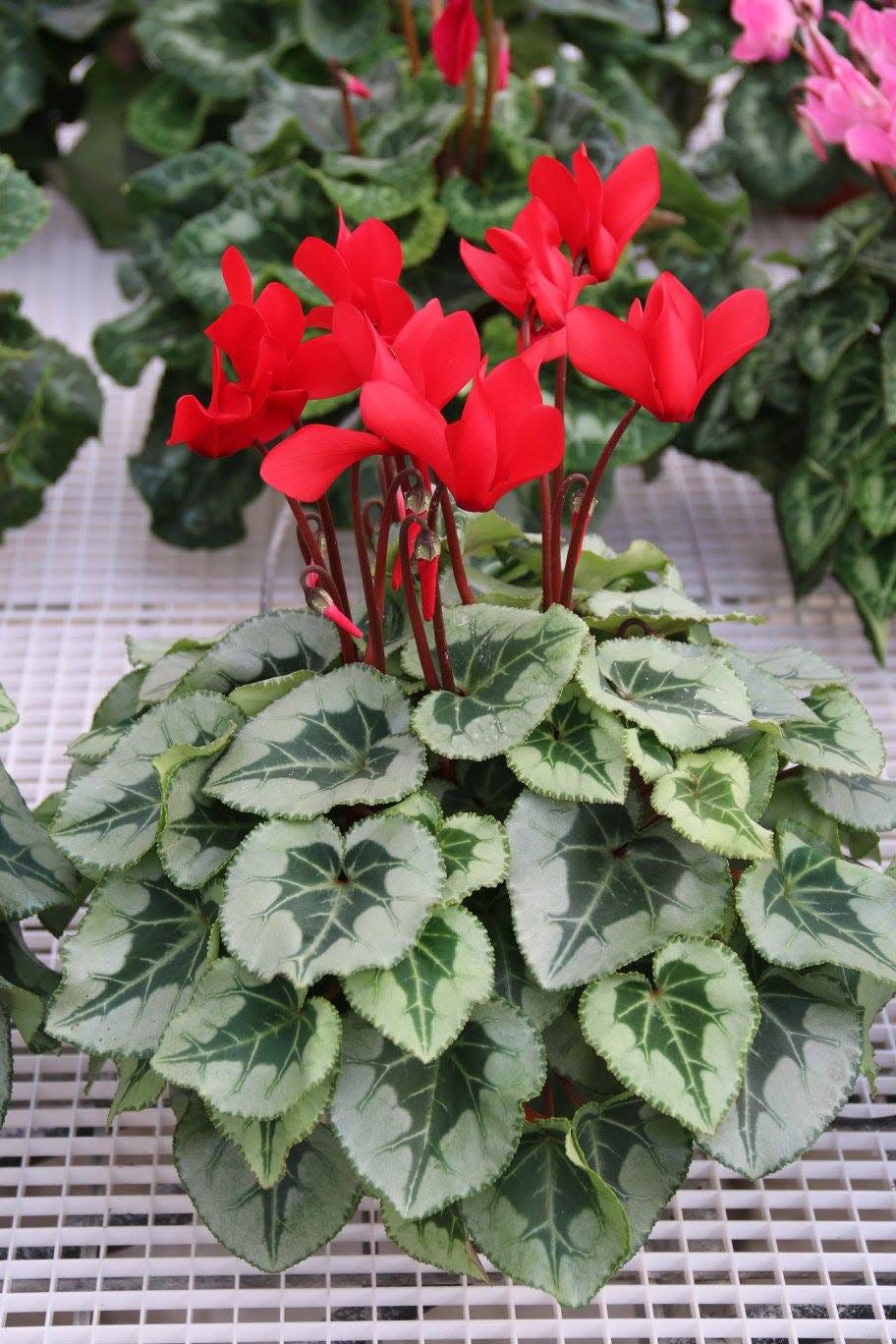Valentine's Day flowers: 3 plants that aren't cut roses and how to care for them
Is there a special person on your Valentine’s Day list? Why not give them a plant?
From heart-shaped foliage, red flowers, and subtle fragrances, there are many plant options you can find for that special someone — or for yourself.
Here are some ideas:
Miniature Roses
Instead of cut roses, a miniature rose plant in a pretty pot will not only provide cheer indoors, it can be planted outside in the spring.
These plants are readily available, come in a variety of colors and are easy to care for.
Gardening resolution:Protect pollinators, reduce pesticide use and guard the environment
More:Understanding plant life cycles will help boost your garden: Here's how
Violets
A gift of violets will be especially popular if your Valentine's birth month is February; the violet is the February birth month flower. The ancient Greeks considered the violet a symbol of love and used them in various love potions.
These plants can bloom year-round indoors and depending on the variety, can also be transplanted outdoors.
Cyclamen
With its heart-shaped leaves, this choice is perfect. Cyclamen flowers come in white, pink, red or lavender. The heart-shaped leaves also have silvery or light green markings.
Plants are sold as large, showy specimens or miniature varieties. Plants need bright light and cooler temperatures indoors.

Dish gardens are nice in that they combine different plants resembling a miniature garden in a container. There are also many different houseplants to pick from; orchids or indoor azaleas are nice. Houseplants with small flowers represent loyalty, while plants with only foliage like bamboo represent good luck. So, instead of candy or cut flowers, think about the gift of a plant this Valentine's Day!
Time for the Great Backyard Bird Count
If you enjoy watching birds, you're not alone. Connect with birds in your favorite places by participating in this year's Great Backyard Bird Count, Feb. 17-20, 2023. Launched in 1998 by the Cornell Lab of Ornithology and National Audubon Society, the GBBC helps scientists better understand global bird populations. Whether you count one bird or hundreds, participating is easy and fun for all ages; and you can do it anywhere there are birds.
Getting started
Decide where you'll watch birds. Watch for 15 minutes or more at least once from Feb. 17-20, 2023. Identify all the birds you see or hear within your planned time/location.
How to enter data
There are three ways to collect your bird sighting information. If you are a beginner or new to bird identification, try using the Merlin Bird ID app which is free for smartphones and easy to use. There is also the eBird mobile app to track your activities if you are a more experienced bird watcher and don't need help with bird identification. This mobile app is also free and it's fast to enter data. Lastly, if you prefer entering sightings on a computer, make a list while you're on a hike or watching outdoor feeders and then enter the information using eBird on a computer.
How to use or download these apps, bird identification information, and a checklist of birds in this area can all be found on the GBBC website; visit birdcount.org.
If you don't want to participate, just enjoy birds while on your outdoor activities; or if you're indoors, enjoy birds via Cornell's live birdcams. Visit birds.cornell.edu/home/ for all the information you need to enjoy birds.
Cornell Cooperative Extension Oneida County answers home and garden questions which can be emailed to homeandgarden@cornell.edu or call 315-736-3394, press 1 and ext. 333. Leave your question, name and phone number. Questions are answered weekdays, 8 a.m. to 4 p.m. Also, visit our website at http://cceoneida.com/ or phone 315-736-3394, press 1 and then ext.100.
This article originally appeared on Observer-Dispatch: Valentine's Day gift ideas: 3 plant options that aren't a dozen roses

